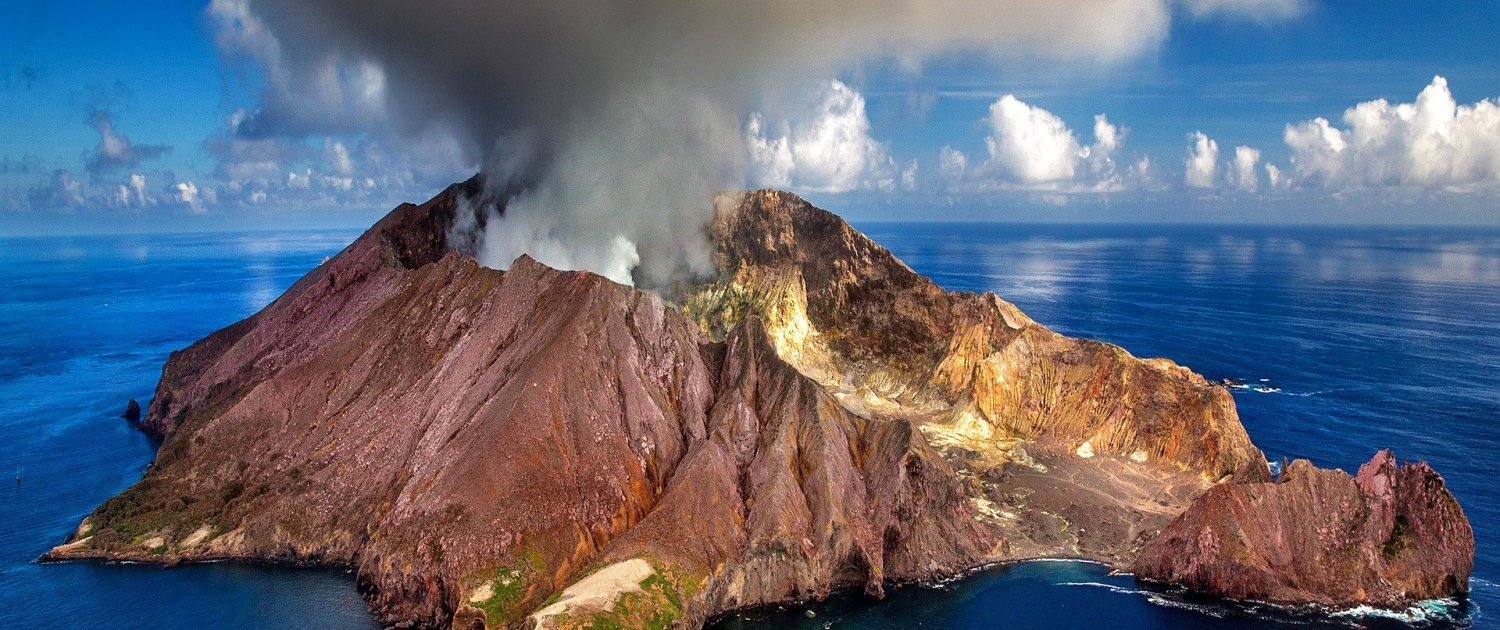White Island Volcano Case Study
New Zealand’s Whakaari/White Island volcano erupted on Monday 9th December 2019. The strato or composite volcano, located on New Zealand’s east coast, erupted at 14:11 NZDT on 9 December 2019.
Whakaari lies at the northern end of the North Island’s ‘line of fire’ – a large volcanic plateau which stretches from the Bay of Plenty on the coast, to Mt Ruapehu inland. The line of fire forms part of the wider ‘Ring of Fire’ around the Pacific ocean.
It also has a water-filled crater lake. When water reacts with hot rock or magma, it can create explosions, and therefore, can make eruptions even more difficult to forecast.
The uninhabited island covers an area of approximately 325 ha (800 acres), which is only the peak of a much larger submarine volcano.
White Island is privately owned. It was declared a private scenic reserve in 1953. Visitors cannot land without permission, however, it is accessible by authorised tourist operators by boat and helicopter.
Why did White Island volcano erupt?
There are several volcanoes in New Zealand, like White Island, that have the ability to produce sudden explosive eruptions at any moment. In the case of White Island, the magma is very shallow, and the heat and gases produced by it affect ground and surface water to create vigorous hydrothermal systems.
Water is trapped in a super-heated state in pores of the rocks. An external influence, such as gas input from below, an earthquake or a change in water level can release the pressure on the hot water trapped below.
Experts identified the event as a phreatic eruption. A phreatic eruption involves the release of steam and volcanic gases which caused an explosion, launching rock and ash 3km into the air. The speed of the expansion of water into steam is supersonic, and the liquid can expand to 1,700 times its original volume. The expansion energy is enough to shatter solid rock, create craters and throw volcanic material several kilometres away.
What were the impacts of the eruption of White Island?
It was reported that there were 47 people on the island when the eruption occurred. Eighteen people were killed and a further 26 were seriously injured, many critically. Many of the surviving tourists on the island experienced burned lungs from inhaling sulphur dioxide and volcanic ash, and “very significant” deep-tissue burns, some to more than half of their body. Twenty-seven of the 31 people injured in the eruption of the Whakaari/White Island volcano had burns to more than 30% of their body.
The bodies of two victims have not been recovered and may have been lost to the sea.
The ongoing seismic and volcanic activity in the area and subsequently heavy rainfall as well as low visibility and toxic gases all hampered recovery efforts.
What are the long-term impacts of the eruption?
It is too early to say what the long term impacts of the eruption will be, however, there is likely to be a negative economic impact on the companies providing island tours.
What were the immediate responses to the eruption of the White Island volcano?
23 people were rescued from the island. It was estimated that there were less than 50 people on the island at the time of the eruption.
Seven helicopters were dispatched to the island by St John Ambulance.
Tour operators rescued people roughly 15 minutes after the eruption.
A national warning was issued for the eruption
Aviation authorities implemented a 26 nautical mile no-fly zone around the island to help rescue crews. White Island is 22 nautical miles offshore.
The New Zealand Red Cross activated the Family Links website for those concerned that their loved ones may have been caught up in the incident.
The military deployed drones at first light the following day to assess the situation on the ground.
A team of six New Zealand soldiers wearing breathing apparatus and special fire-retardant suits battled heat stress as they recovered six of the victims of the Whakaari/White Island volcano eruption four days after the eruption.
Australia offered additional support to the New Zealand medical services after requests from the New Zealand government.
New Zealand health authorities reportedly ordered 1.2 million sq cm of skin from the US in order to treat those injured: 27 of whom had burns to more than 30% of their body, with some having burns to 90-95% of their body. For context, experts say the palm of a hand is about 1.5% of the area of the body.
Why were there no warnings?
In this age of technology and volcanic monitoring, it seems strange that there should be little or no warning for eruptions such as this. However, the eruption is not caused by magma, but by steam, and this is much harder to track in our current monitoring systems.
Monitoring and warning for phreatic eruptions are very challenging. It is difficult to predict when they will occur. Most systems are already primed for explosive eruptions, but their triggers are poorly understood.
The warning period for such eruptions is in seconds to minutes. The potential for monitoring and anticipating these events lies in tracking vapour and liquid pressure in the system. Unfortunately, there are no simple rules to follow as each hydrothermal system is different.
Related Topics
Use the images below to explore related GeoTopics.



